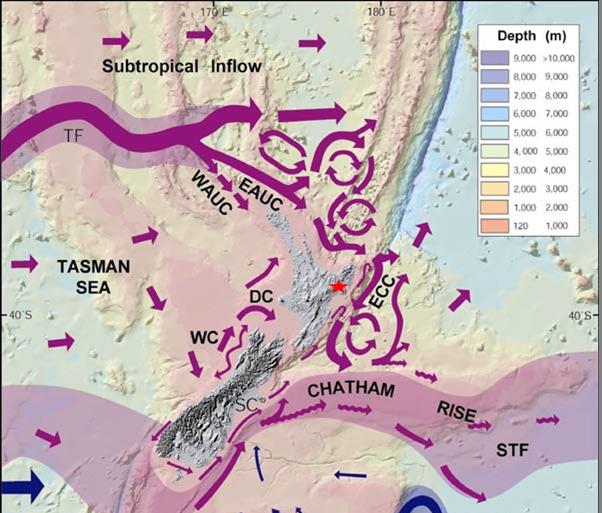Climate Change
If anthropogenic climate change causes even a 3°C increase in average temperatures (which is the expectation on our current trajectory) it is likely to result in the extinction of 3 in every 5 species currently living[1]. This dramatic extinction event is due to the relatively rapid rate of this change leading to the inability of these species to genetically adapt to the changed environment (or to migrate quickly enough into better ecological zones). Anything above 1 degree (already inevitable) will result in the loss of approx. 200,000 species and billions of severely affected humans.
[1] Flannery, T. (2008) The Weather Makers, Text Publishing, Melbourne, Vic.
Carbon sequestration with Macrocystis
Macrocystis pyrifera (Giant/Bladder Kelp) cultivation has the potential capacity to sequester carbon at many times the rate that can be achieved through forestry plantation projects. M. pyrifera grows with a Net Primary Production (NPP) of 5.2 kg dry matter/m2/ year compared to an average of around 0.95 kg dry matter/m2/ year for temperate forest plantations. Its living biomass (~ 0.4 kg dry matter/m2 on average) has a rapid turnover of organic matter at a rate of about twelve times per year[1]. If this organic matter can survive decomposition (and conversion of the carbon back into CO2), and reach depths of more than 1000 m, it has the possibility of remaining in the form of organic carbon and therefore acting as a deep ocean carbon sink. In the case of the east coast of New Zealand, this kelp detritus could be effectively "locked up" in the Kermadec Trench (which is around 8,000 m) and the organic carbon contained within can be locked away from exchange with the atmosphere.[2] If 25% of this organic can be sequestered for an average of 400 years it would increase the effective carbon sequestration per square metre by 100 times i.e. 500 times greater than plantation forestry/ m2.
Macroalgaes, such as Giant Kelp, rapidly accumulate biomass and as part of this process, a significant proportion (estimates range up to 60%) of the carbon they fix photosynthetically is released into the water. A proportion of this released dissolved organic carbon (DOC) is highly labile and enters the bacterial loop and is rapidly remineralized back to CO2. However, a proportion is known to be resistant to biological degradation and enters the refractory DOC pool. The marine DOC pool is the largest organic carbon pool on the planet and the refractory component is known to have a turnover period of 100s-1000s years.[3] The ocean also provides a sink for carbon in the form of CO2. While many CO2 molecules that diffuse into sea surface waters diffuse back to the atmosphere on very short time scales, some of the carbon atoms from these original CO2 molecules stay dissolved in the colder depths of the ocean for time scales of hundreds to thousands of years.[4]
[1] Rassweiler, A., Reed, D., Harrer, S., & Nelson, J. (2018). Improved estimates of net primary production, growth and standing crop of Macrocystis pyrifera in Southern California. Ecology, 29 June 2018
[2] Krause-Jensen D, Duarte CM (2016) Substantial role of macroalgae in marine carbon sequestration. Nature Geoscience 9: 737–742
[3] Hughes, A.D. et al (2012) Does seaweed offer a solution for bioenergy with biological carbon capture and storage? Pub. Wiley Online Library (wileyonlinelibrary.com). DOI: 10.1002/ghg.1319
New Zealand Oceanography
 The east coast of New Zealand sees the convergence of the Subtropical and the Subantarctic Fronts (currents). The figure opposite shows surface currents pushing north up the east coast of the South Island and south down the east coast of the North Island. The only option for this coastal water (potentially containing M. pyrifera detritus), is to move eastward (and/or downward into the trench).
The east coast of New Zealand sees the convergence of the Subtropical and the Subantarctic Fronts (currents). The figure opposite shows surface currents pushing north up the east coast of the South Island and south down the east coast of the North Island. The only option for this coastal water (potentially containing M. pyrifera detritus), is to move eastward (and/or downward into the trench).
